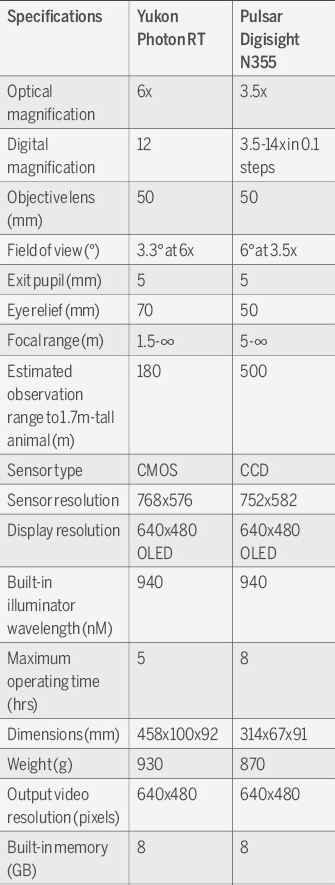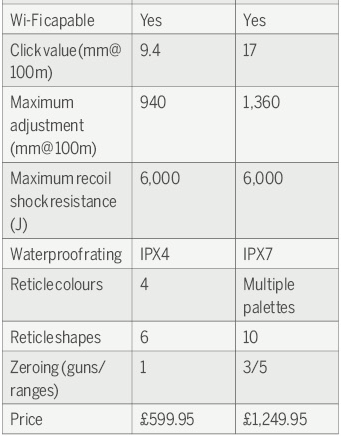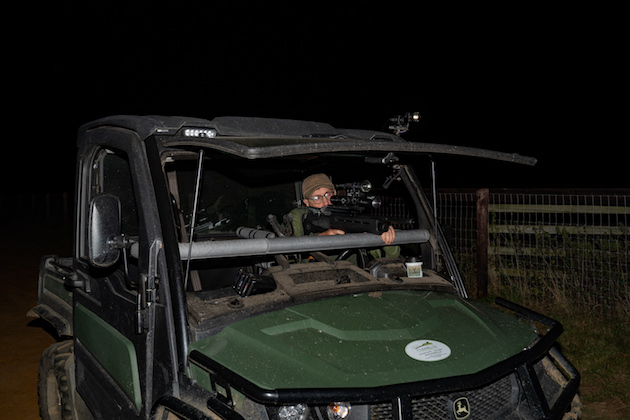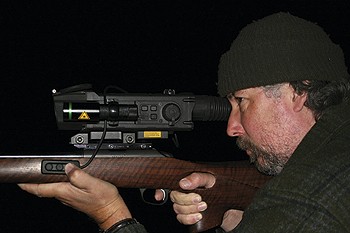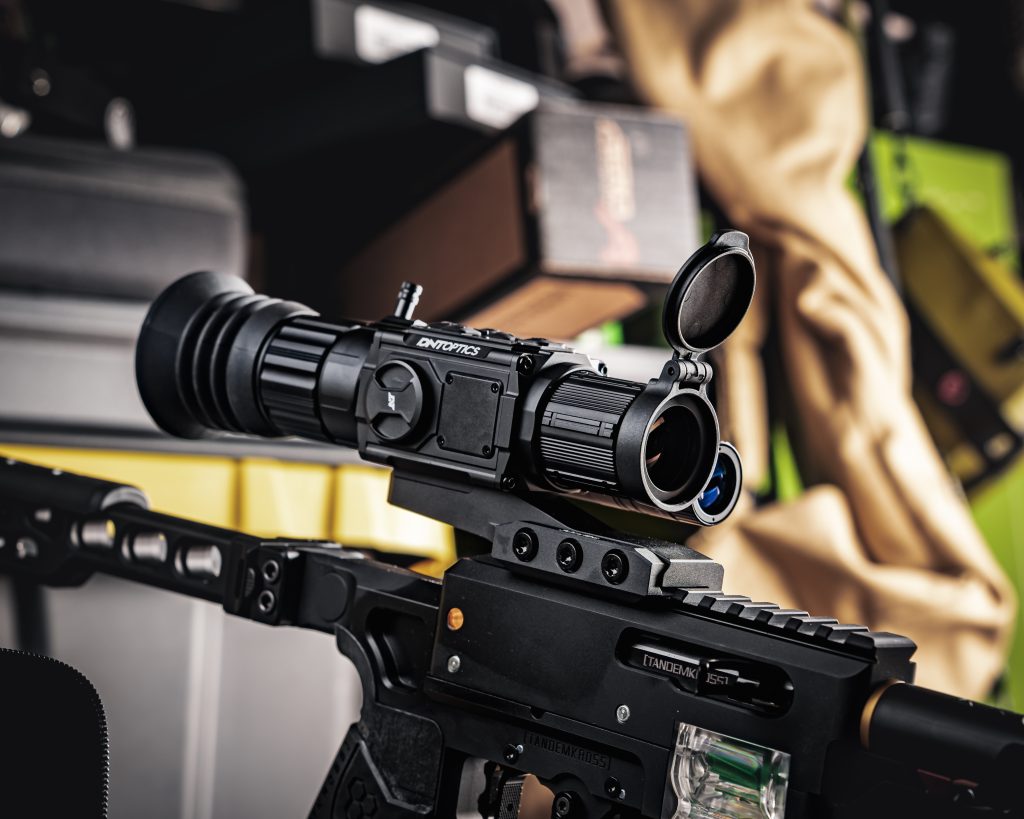With nightvision shooting equipment becoming ever more popular, Ian Valentine asks the experts to weigh the latest green-tinted scopes against…
Win CENS ProFlex DX5 earplugs worth £1,149 – enter here
Which is the best night vision scope for the money?
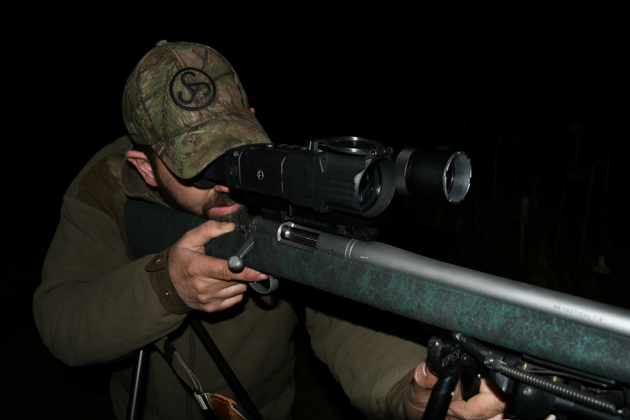
Pulsar’s N550 digital night-vision rifle scope was a game- changer in the world of late-night pest control and subsequent updates have continually evolved.
The closely associated Yukon brand has run in parallel, offering similar technology with fewer “toys” included.
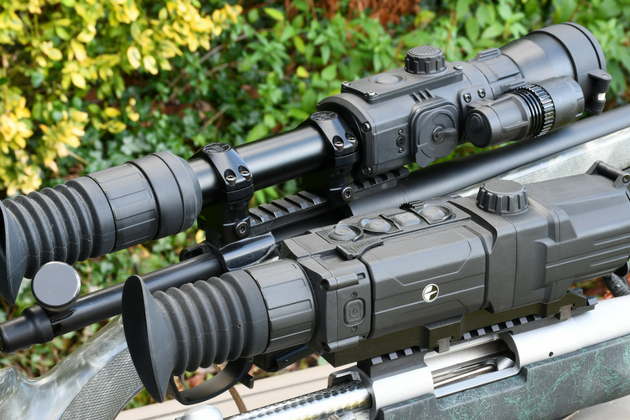
Do you need to pay top dollar for a decent night-vision rifle scope or will a cheaper version suit your needs?
Which is the best night vision scope of the two?
I was asked to compare the Yukon Photon RT 6×50 with the Pulsar Digisight Ultra N355, to determine whether the Digisight is worth twice what the Photon sells for. This is by no means an in-depth review of the night vision scope but a guide to the pros and cons of each.
The first matter to consider is mounting the unit to your rifle. The Photon needs a set of regular 30mm rings whereas the Digisight has an integral rail with Weaver claws incorporated. It has no recoil lugs across its underside to interlock with a Weaver or Picatinny type rail, so consistent re-positioning is not as precisely assured as it could be. But it is more likely compatible with two-piece Weaver bases rather than a full-length Picatinny spec rail.
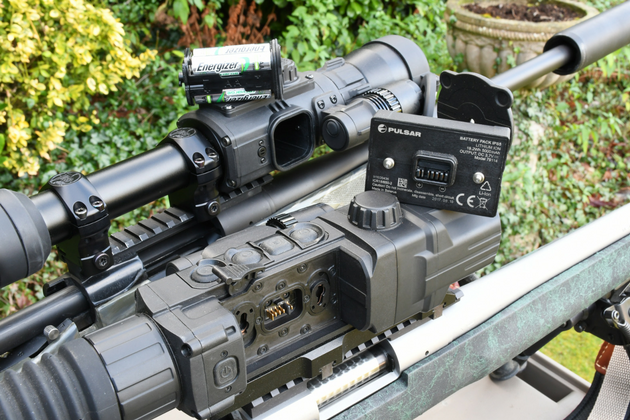
The Digisight IPS5 battery pack offers more predictable longevity, especially in the cold
Swapping night vision for daylight optics
The ability to swap night vision for daylight optics is an important factor. Using a torque wrench to nip up the Photon’s rings with a Torx bit or Allen key is straightforward and gave me perfect return to zero, but the finger-tightened nuts on the Digisight are more fiddly, requiring a spanner as well and needing a few “clicks” to readjust each time.
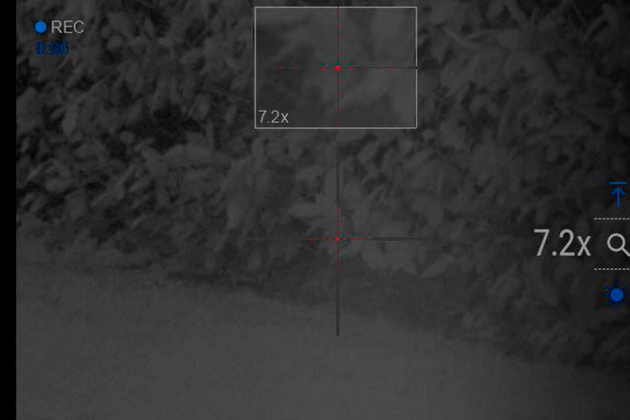
Screen-in zoom is the Digisight’s major benefit, says Chris
Power, setup and zeroing
Power supply is a key difference. Pulsar supplies its superb IPS5 lithium-ion battery unit, which is common to its range of other night-vision and thermal scopes and spotters. With 5,000mAh capacity it outranks any AAs and seems much less susceptible to cold conditions.
Both units have a power indicator within but I found that on the Digisight far more dependable. If the Photon showed anything but “full”, I always recharged, but I confidently took the Digisight out if showing only half or even a quarter charge.
Setup and zeroing have similar functionality, with the one-shot zero capability where you shoot a single round, then hold a cross on your aiming mark while moving the reticle to point of impact on target.
Because the Digisight has far more functions, the menu structure is more complicated and can be a little frustrating at times; you have to take three or four options and their submenus at each stage of re-zeroing.
Controlling these menus is down to the rotary commander on the Photon versus a multi-button keypad on the Digisight. Though the buttons offer tactile clicks, wearing gloves at night will soon have you fumbling, without any immediate feeling for which button your fingers are touching. The rotary commander is simple in comparison and I much prefer it.
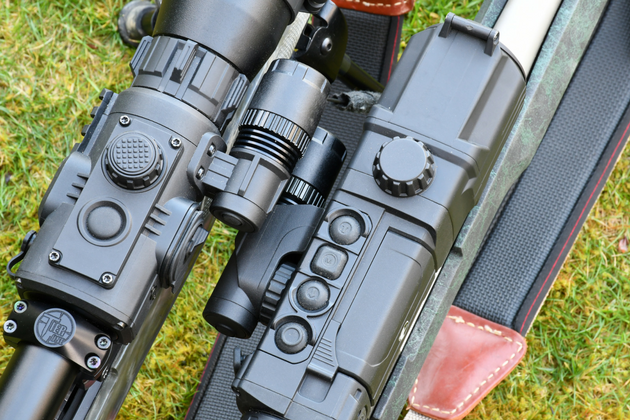
Our reviewer preferred the rotary commander on the Photon (left) to the Digisight’s keypad
The eyepiece
Both scopes show a ring at the eyepiece to focus the internal screen and reticle for your eye beneath the identical ventilated bellows. Each shows a similar feature common to all digital night vision: the image, though seeming round and with a broad bright exit pupil with acceptable eye relief, has a somewhat spherical perception, and when you have the cross-hairs in focus, displayed functions toward the circumference are often out of focus. You need to keep your eye carefully aligned to retain the detailed focus you have set up.
The Digisight is far more compact in length, with corresponding shorter reach to the controls. Weights are similar and both have the same invisible 940nM infrared illuminator, which is good out to about 75m. It dwindles beyond that. Most serious night-vision users will add large illuminators anyway so I will keep with the standard and compare like for like if any extra unit is added.
I used two LED Ray 900 setups in the ball mount to zero the light to the scope’s zero. A Picatinny mount is available under the standard infrared unit on the Digisight but with an infrared unit mounted to this single location, the whole optic is off balance and far bulkier. It is easier to add additional items to the standard 30mm tube of the Photon and I was able to use the illuminator centrally above for easier access and retained balance. It is less prone to knocks and bumps that could nudge it off line.
Multiple gun setups, ammunition types and ranges are on offer with the Digisight and these are what add to the cost of the unit. In the dark most pest control duties suit simplicity and a decent rifle set up to correspond with a suitable point-blank zero range will shoot faster and more often than one being twiddled. For the high-volume shooter, the functionality may not get used but for those who need to grasp every opportunity, with every bit of functional assistance, the Digisight’s extra features might be a benefit.
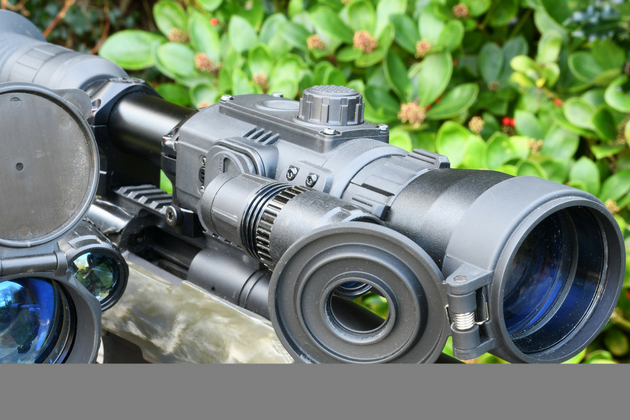
Yukon Photon RT
Magnification
Photon has 6x optical magnification boosted digitally to 12x. The Digisight starts out with 3.5x and further zoom is all digital, with 0.1x increments available from the up/down buttons either side of the menu button.
I like a bit of zoom for zeroing but prefer a wider field of view when out hunting. The third of four buttons on the top scrolls through the 3.5-14x in three steps. This is fast if you can find the correct button quickly and long hold activates the screen in screen zoom. This excellent feature allows precise shot placement from the upper screen, without losing initial broad field of view from the main display below it.
The important thing is the relative image quality. Starting in daylight on a pair of almost identical .223s, the image quality of the Photon was superior. Both have similar 2mm pinhole apertures, or fully opened lens caps for maximum light entrance. The Photon also offers an intermediate 20mm aperture which, compared with the pinhole of the Digi, was far sharper in daylight. I found that surprising because a smaller aperture always sharpens images with greater depth of field.
Image quality from the Digisight seemed smoother when any motion was involved with the gun or target and a little less pixelated. However, it also looked somewhat grainy, even if the “grains” were finer. By day, light contrast is key and, regardless of settings, I couldn’t overcome this. Comparing 6x or 12x magnification on both units, I preferred the simpler, crisper, if a little pixelated image of the Photon. Sights like these struggle with colour contrast in daylight and movement is usually what gives things away, so it was hard to pick a winner
.
After dark, the results were confusing
The Digisight, with comparable illumination, was crisper and brighter as its price tag should suggest but the ability to use a 20mm aperture on the Photon still had benefits. Excessive infrared illumination was less likely to white out any targets when bouncing back from intervening foliage. When engaging rabbits, there was an overwhelming eyeshine that confused the Digisight’s picture. I improvised a 20mm aperture from duct tape to try out the theory and concluded that Pulsar needs to add that option to the Digisight.
The Photon, though more pixelated in image quality, was easier to use. Focusing is easier, too, with a full-sized collar behind the objective bell rather than the small knob atop the Digisight.
Rabbiting with night vision, A shot in the dark
Bruce Potts is hard to please when it comes to nightvision kit, but when he tests the Pulsar N550 Digisight…
The verdict
The Photon is very good value and suits .22 rimfire range rabbit shooters perfectly at ranges appropriate for that calibre. Foxes standing proud of ground clutter will be clearly visible at twice that range. Overall, I found the unit less fussy and simpler to use with the 20mm aperture a great compromise for day or night.
A decent infrared illuminator with spread/focus and zero control is mandatory for both units to get the best from them. The Photon is great for rats without one at close range but the Digisight is pointless without one at its intended ranges.
The Digisight works well but its control buttons are fiddly in gloves and the menu is extensive. The lack of a 20mm aperture option is a serious oversight; it would help the “tunability” of the infrared/brightness/contrast balance. A slightly crisper display with smoother refresh rate and finer reticles make the Digisight better as ranges increase.
Contact Scott Country or tel 01556 503587.
Yukon Photon RT 6×50 Digital Night Vision Riflescope £599.95
Pulsar Digisight Ultra N355 Digital Night Vision Scope £1,249.95
Related Articles
Get the latest news delivered direct to your door
Subscribe to Shooting Times & Country
Discover the ultimate companion for field sports enthusiasts with Shooting Times & Country Magazine, the UK’s leading weekly publication that has been at the forefront of shooting culture since 1882. Subscribers gain access to expert tips, comprehensive gear reviews, seasonal advice and a vibrant community of like-minded shooters.
Save on shop price when you subscribe with weekly issues featuring in-depth articles on gundog training, exclusive member offers and access to the digital back issue library. A Shooting Times & Country subscription is more than a magazine, don’t just read about the countryside; immerse yourself in its most authoritative and engaging publication.






